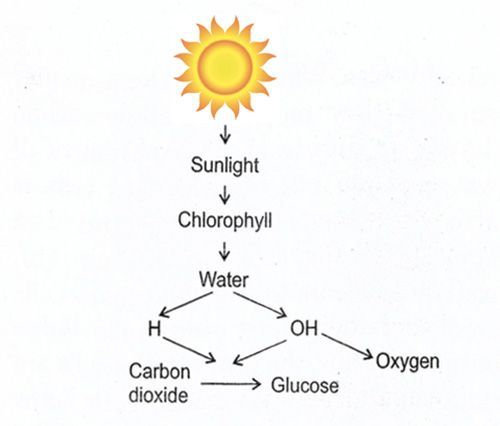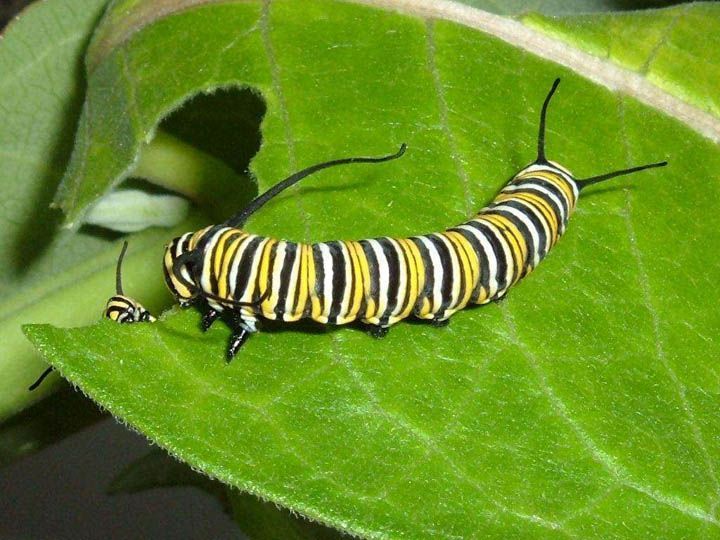Photosynthesis
Factors affecting Photosynthesis.
Of the several factors which affect photosynthesis, three are the most important : carbon dioxide, light and warm temperature (but not higher than 40°C because it slows down and even stops the enzyme action)
All the three factors are inter-dependent and each of these factors limits the other.

For example, if CO2 is less and the other two are more, there will be less photo_synthesis. Similarly, less light will slow down the process even if there is lot of CO2 and warm temperature.
Similarly, if the temperature is low, there will be less photosynthesis even if there is plenty of CO2. Too much light beyond a certain limit destroys chlorophyll and the process of photosynthesis is hampered.
End Product
There are two end-products of photosynthesis 1. Glucose and 2. Oxygen
Glucose
The sugar (glucose) it can be immediately utilised by the cells - stored in the form of insoluble starch.
Oxygen
Some of the oxygen releaste may be used in respiration in the leaf cells, but the major portion of it is not required, and diffuses out into the atmosphere through the stomata. The oxygen is not a waste but vital because, organisms need oxygen for respiration.
Utilisation of Synthesised Food
Food manufactured in the leaf is required for use by all other parts of the plant. Glucose is formed in the leaf very rapidly during photosynthesis and it cannot be transported to other parts of the plant with the same rapidity. So, it is converted into insoluble starch for temporary storage in the leaf.
At night, this starch is reconverted into soluble sugar. This sugar is transported as sucrose solution through the veins of the leaf and downwards through the phloem of the stem.
In this way, it gets transported to different parts of the plant where it may be reconverted into starch for storage (as in potato) or utilised to produce energy for various a functions in the plant.
Significance of Photosynthesis
Food for all
Plants prepare their own food by photosynthesis, and they in turn are eaten by the animals. Therefore, green plants are the direct or indirect sources of food to all organisms.
Oxygen for Respiration
All the free oxygen in the atmospheric air is the result of photosynthesis.
No organism can survive without oxygen as it is needed for respiration.
Even plants require oxygen in dark for their own respiration.


